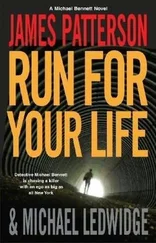Most people have been subject to the deafening howling of feedback at a concert, when the sound system squeals painfully. The microphone sends a signal to the speakers. The speakers emit the signal. The signal can be picked up by the microphone and sent through the system again, if it’s too loud or too close to the speakers. The sound rapidly amplifies to unbearable levels, sufficient to destroy the speakers, if it continues.
The same destructive loop happens within people’s lives. Much of the time, when it happens, we label it mental illness, even though it’s not only or even at all occurring inside people’s psyches. Addiction to alcohol or another mood-altering drug is a common positive-feedback process. Imagine a person who enjoys alcohol, perhaps a bit too much. He has a quick three or four drinks. His blood alcohol level spikes sharply. This can be extremely exhilarating, particularly for someone who has a genetic predisposition to alcoholism. [18023] Peterson J.B., Pihl, R.O., Gianoulakis, C., Conrod, P., Finn, P.R., Stewart, S.H., LeMarquand, D.G. Bruce, K.R. (1996). “Ethanol-induced change in cardiac and endogenous opiate function and risk for alcoholism.” Alcoholism: Clinical & Experimental Research, 20 , 1542-1552.
But it only occurs while blood alcohol levels are actively rising, and that only continues if the drinker keeps drinking. When he stops, not only does his blood alcohol level plateau and then start to sink, but his body begins to produce a variety of toxins, as it metabolizes the ethanol already consumed. He also starts to experience alcohol withdrawal, as the anxiety systems that were suppressed during intoxication start to hyper-respond. A hangover is alcohol withdrawal (which quite frequently kills withdrawing alcoholics), and it starts all too soon after drinking ceases. To continue the warm glow, and stave off the unpleasant aftermath, the drinker may just continue to drink, until all the liquor in his house is consumed, the bars are closed and his money is spent.
The next day, the drinker wakes up, badly hungover. So far, this is just unfortunate. The real trouble starts when he discovers that his hangover can be “cured” with a few more drinks the morning after. Such a cure is, of course, temporary. It merely pushes the withdrawal symptoms a bit further into the future. But that might be what is required, in the short term, if the misery is sufficiently acute. So now he has learned to drink to cure his hangover. When the medication causes the disease, a positive feedback loop has been established. Alcoholism can quickly emerge under such conditions.
Something similar often happens to people who develop an anxiety disorder, such as agoraphobia. People with agoraphobia can become so overwhelmed with fear that they will no longer leave their homes. Agoraphobia is the consequence of a positive feedback loop. The first event that precipitates the disorder is often a panic attack. The sufferer is typically a middle-aged woman who has been too dependent on other people. Perhaps she went immediately from over-reliance on her father to a relationship with an older and comparatively dominant boyfriend or husband, with little or no break for independent existence.
In the weeks leading up to the emergence of her agoraphobia, such a woman typically experiences something unexpected and anomalous. It might be something physiological, such as heart palpitations, which are common in any case, and whose likelihood is increased during menopause, when the hormonal processes regulating a women’s psychological experience fluctuate unpredictably. Any perceptible alteration in heart-rate can trigger thoughts both of heart attack and an all-too-public and embarrassing display of post-heart attack distress and suffering (death and social humiliation constituting the two most basic fears). The unexpected occurrence might instead be conflict in the sufferer’s marriage, or the illness or death of a spouse. It might be a close friend’s divorce or hospitalization. Some real event typically precipitates the initial increase in fear of mortality and social judgment. [18024] Pynoos, R. S., Steinberg, A. M., & Piacentini, J. C. (1999). “A developmental psychopathology model of childhood traumatic stress and intersection with anxiety disorders.” Biological Psychiatry, 46 , 1542–1554.
After the shock, perhaps, the pre-agoraphobic woman leaves her house, and makes her way to the shopping mall. It’s busy and difficult to park. This makes her even more stressed. The thoughts of vulnerability occupying her mind since her recent unpleasant experience rise close to the surface. They trigger anxiety. Her heart rate rises. She begins to breathe shallowly and quickly. She feels her heart racing and begins to wonder if she is suffering a heart attack. This thought triggers more anxiety. She breathes even more shallowly, increasing the levels of carbon dioxide in her blood. Her heart rate increases again, because of her additional fear. She detects that, and her heart rate rises again.
Poof! Positive feedback loop. Soon the anxiety transforms into panic, regulated by a different brain system, designed for the severest of threats, which can be triggered by too much fear. She is overwhelmed by her symptoms, and heads for the emergency room, where after an anxious wait her heart function is checked. There is nothing wrong. But she is not reassured.
It takes an additional feedback loop to transform even that unpleasant experience into full-blown agoraphobia. The next time she needs to go to the mall, the pre-agoraphobic becomes anxious, remembering what happened last time. But she goes, anyway. On the way, she can feel her heart pounding. That triggers another cycle of anxiety and concern. To forestall panic, she avoids the stress of the mall and returns home. But now the anxiety systems in her brain note that she ran away from the mall, and conclude that the journey there was truly dangerous. Our anxiety systems are very practical. They assume that anything you run away from is dangerous. The proof of that is, of course, the fact you ran away.
So now the mall is tagged “too dangerous to approach” (or the budding agoraphobic has labelled herself, “too fragile to approach the mall”). Perhaps that is not yet taking things far enough to cause her real trouble. There are other places to shop. But maybe the nearby supermarket is mall-like enough to trigger a similar response, when she visits it instead, and then retreats. Now the supermarket occupies the same category. Then it’s the corner store. Then it’s buses and taxis and subways. Soon it’s everywhere. The agoraphobic will even eventually become afraid of her house, and would run away from that if she could. But she can’t. Soon she’s stuck in her home. Anxiety-induced retreat makes everything retreated from more anxiety-inducing. Anxiety-induced retreat makes the self smaller and the ever-more-dangerous world larger.
There are many systems of interaction between brain, body and social world that can get caught in positive feedback loops. Depressed people, for example, can start feeling useless and burdensome, as well as grief-stricken and pained. This makes them withdraw from contact with friends and family. Then the withdrawal makes them more lonesome and isolated, and more likely to feel useless and burdensome. Then they withdraw more. In this manner, depression spirals and amplifies.
If someone is badly hurt at some point in life—traumatized—the dominance counter can transform in a manner that makes additional hurt more rather than less likely. This often happens in the case of people, now adults, who were viciously bullied during childhood or adolescence. They become anxious and easily upset. They shield themselves with a defensive crouch, and avoid the direct eye contact interpretable as a dominance challenge.
Читать дальше












